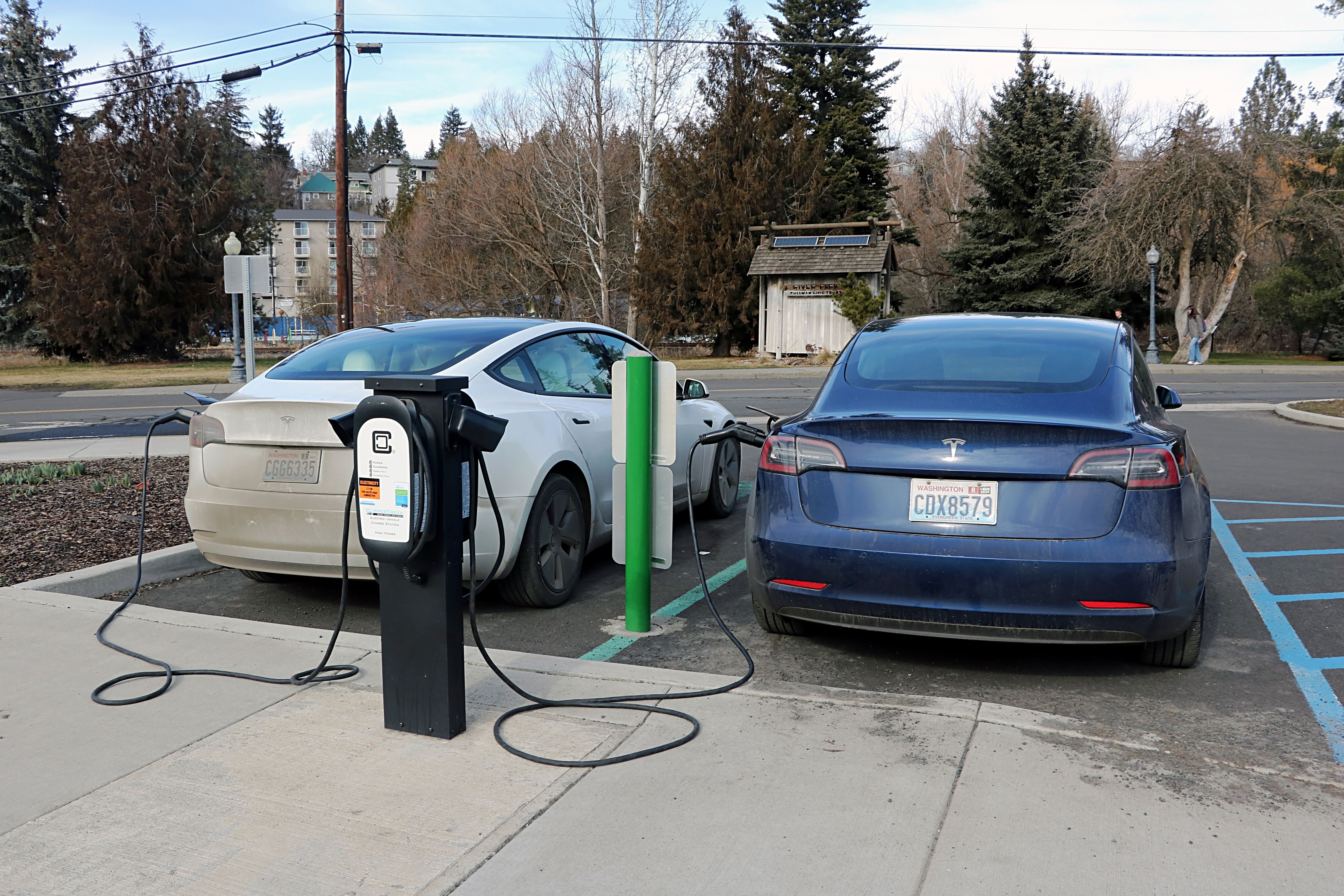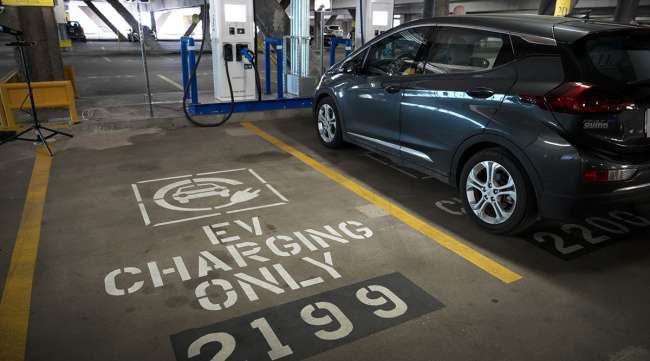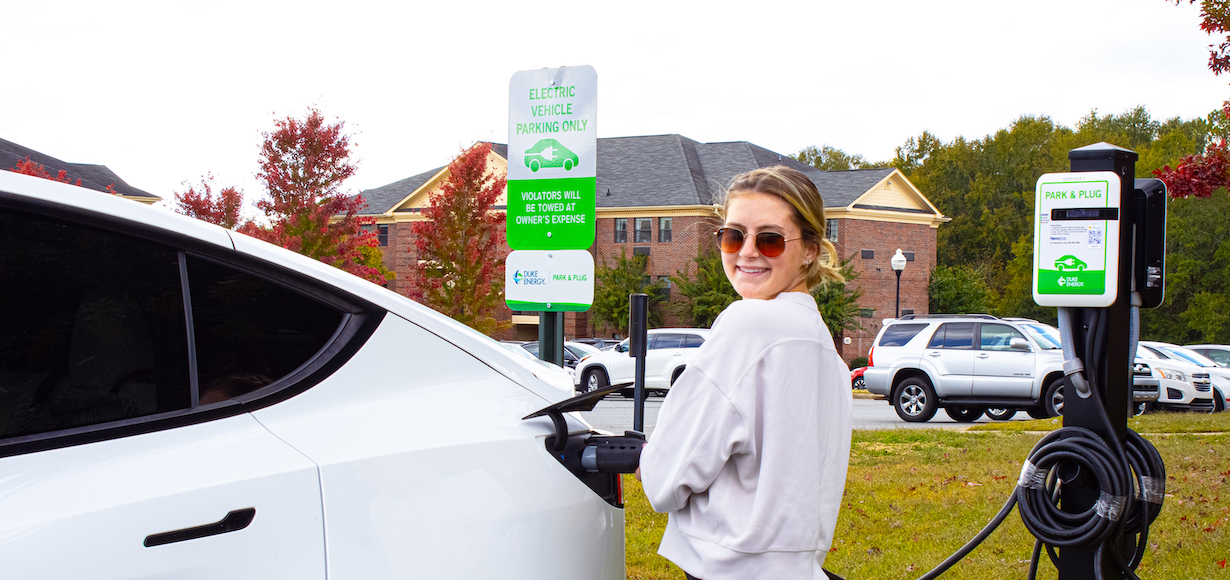How to Make Smarter Decisions in EV Investments by Buying EV Charging news
How to Make Smarter Decisions in EV Investments by Buying EV Charging news
Blog Article
Top EV Charging Information: Secret Updates on Framework and Innovation

Current Developments in Fast-Charging Technology

In addition, improvements in battery innovation, including improved thermal monitoring systems and greater energy thickness batteries, enhance fast-charging capabilities. These advancements reduce the threat of battery deterioration throughout fast charging, ensuring durability and performance for EV proprietors.
Additionally, the assimilation of clever charging options is improving customer experience, making it possible for real-time surveillance and vibrant rates designs. EV Charging news. This flexibility enables vehicle drivers to optimize charging costs and times based on grid need
As automakers remain to invest in fast-charging networks, the partnership in between industry stakeholders is essential. Collaborations in between charging terminal providers and automobile makers are leading the way for extensive coverage, eventually fostering a much more durable EV ecosystem. These innovations are crucial in sustaining the change to lasting transport.
Government Efforts for Charging Expansion
Government initiatives play an important duty in the expansion of electrical lorry (EV) charging facilities, assisting in the transition to sustainable transport. Various government and state programs are being carried out to boost billing ease of access, reduce the economic burden on consumers, and advertise the fostering of electrical vehicles.
Especially, the U.S. federal government has actually designated considerable funding through the Infrastructure Financial Investment and Jobs Act, which sets aside $7.5 billion for EV charging network advancement throughout the nation. This funding is targeted at releasing hundreds of new billing terminals, especially in underserved locations, thereby resolving variety anxiety amongst potential EV customers.
In addition, numerous states are passing regulations to enhance the allowing process for billing station installations, which is vital for increasing release. Rewards such as tax obligation credit histories and refunds for both customers and businesses are also being presented to urge the installation of charging infrastructure.
Furthermore, public-private collaborations are increasingly ending up being a focus, leveraging private financial investment to match government funding. These initiatives emphasize a collaborative technique vital for building a effective and extensive EV charging network, ultimately contributing to a greener and more lasting future.
Ingenious Battery Solutions Enhancing Effectiveness
Changing the landscape of electric vehicle (EV) innovation, cutting-edge battery remedies are considerably boosting performance and efficiency. Advances in battery chemistry, especially with lithium-sulfur and solid-state batteries, are bring about raised energy thickness, which enables longer ranges and faster billing times. These new battery kinds have the prospective to outperform typical lithium-ion batteries by providing higher capabilities while reducing weight, consequently boosting general car effectiveness.
Additionally, advancements in battery monitoring systems (BMS) are maximizing energy usage and expanding battery lifespan. Smart formulas check battery wellness and efficiency, enabling real-time modifications to billing and releasing procedures. This not just improves the efficiency of the battery yet additionally makes certain a much more sustainable original site and reputable power resource for EVs.
In addition, the combination of reusing innovations is resolving the ecological influence of battery manufacturing and disposal. Developments in second-life applications for EV batteries are facilitating their use in power storage systems, adding to a round economy.
As these innovative battery options proceed to advance, they assure to change the EV market, making electrical automobiles more attractive and easily accessible to a broader target market while sustaining worldwide sustainability goals.

Collaboration In Between Automakers and Charging Networks
Recognizing the critical need for a robust charging framework, automakers are significantly teaming up with charging network suppliers to enhance the EV possession experience (EV Charging news). These partnerships aim to develop a smooth charging environment that benefits consumers and supports the transition to electric cars
Major vehicle brand names are signing up with forces with well-known billing networks to expand their charging station coverage, guaranteeing vehicle drivers have access to reputable and hassle-free billing alternatives. Partnerships with networks like ChargePoint and Electrify America enable automakers to incorporate charging services directly right into their automobiles' navigating systems, directing customers to the closest terminals and offering real-time accessibility updates.
Additionally, these cooperations commonly result in the advancement of fast-charging modern technologies that substantially lower the time required to reenergize an EV. By pooling sources and experience, automakers and charging networks can innovate visit quicker, creating options that fulfill the growing need for electrical wheelchair.
Furthermore, joint campaigns might additionally result in even more standard charging protocols, which can ease customer confusion and promote more comprehensive EV adoption. Overall, these strategic alliances are critical in constructing a reliable and straightforward billing framework that fulfills the requirements of an increasing electric automobile market.
Obstacles Encountering EV Billing Facilities
As the electrical vehicle market remains to expand, a number of difficulties are surfacing that impede the advancement of an extensive billing facilities. Among the key obstacles is the inadequate number of billing terminals, especially in country and underserved city locations. This void produces array anxiousness among possible EV buyers, hindering them from making the switch.
Furthermore, the lack of standardization in charging modern technology makes complex the facilities landscape. Variations in plug kinds and charging rates can create complication for individuals and increase operational complexities for billing network operators.
One more pushing issue is the high expense connected with the installation and upkeep of billing terminals, which can be a barrier for both public entities and personal businesses. Regulatory difficulties and zoning constraints can delay the deployment of charging infrastructure, restraining development in expanding important services. Dealing with these challenges will certainly be important for cultivating a durable EV ecosystem that sustains the shift to sustainable transport.
Conclusion
In verdict, the recurring innovations in EV billing innovation, sustained by substantial government initiatives and innovative battery services, are essential for the expansion and performance of electric lorry facilities. Cooperations in between car manufacturers Extra resources and billing service providers even more boost station coverage, addressing the growing need for available billing options. In spite of obstacles that persist within the EV billing landscape, these developments signify a favorable trajectory towards an extra lasting and effective electric vehicle ecological community.
Innovations in charging facilities have actually led to the development of ultra-fast battery chargers capable of providing up to 350 kW of power, dramatically reducing charging times. Variations in plug types and charging rates can develop complication for users and raise operational intricacies for charging network operators.In final thought, the continuous innovations in EV billing technology, sustained by substantial government campaigns and cutting-edge battery remedies, are crucial for the growth and performance of electric automobile facilities. Partnerships between car manufacturers and charging companies additionally improve terminal protection, addressing the expanding demand for easily accessible charging options. Despite difficulties that persist within the EV billing landscape, these advancements signify a favorable trajectory in the direction of a much more sustainable and reliable electrical vehicle community.
Report this page